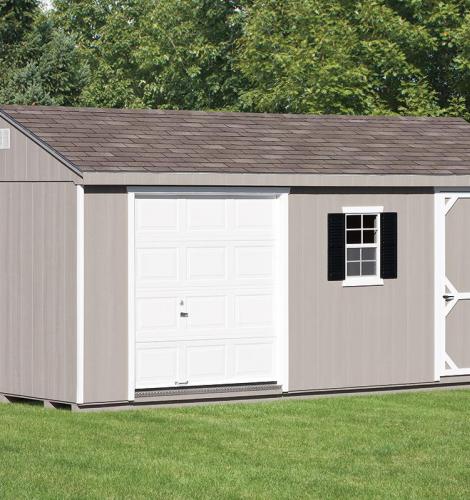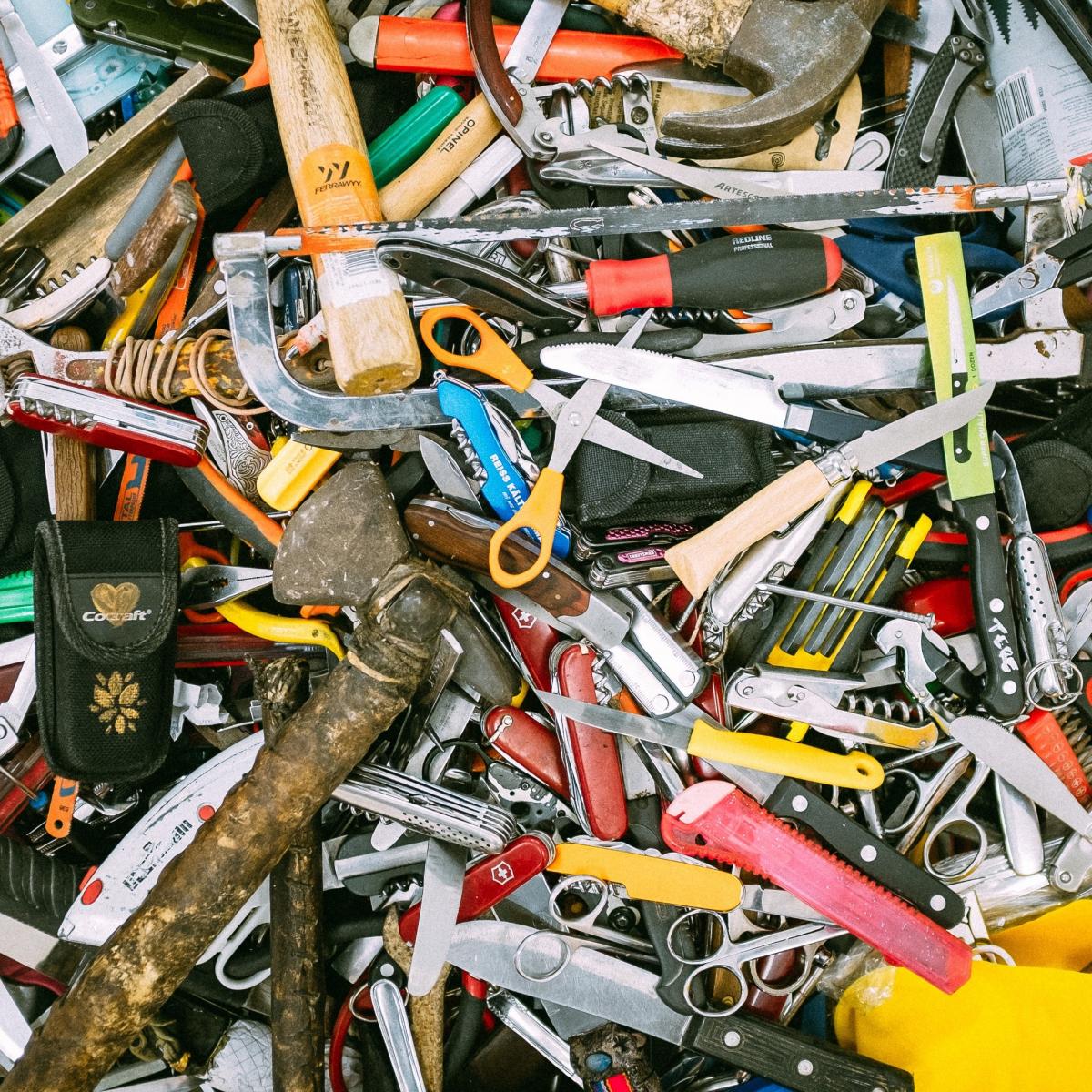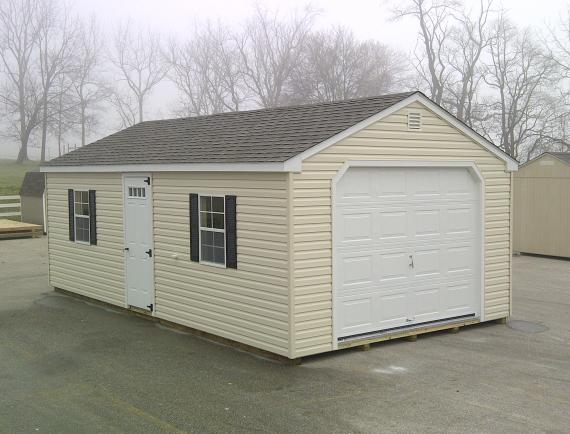
A garage can accumulate an awful lot of items over the years. Homeowners have enough to worry about without fussing over every item that goes through the garage. With bills, kids, jobs, and taxes it’s hard to maintain a house on top of everything else. There comes a day once in a while, however, when every homeowner with a garage comes to realize it might have a clutter problem.
When the clutter becomes too much, it can affect the rest of the house. Not to mention your mood. To help alleviate some of the stress, here’s a comprehensive guide to tackle the clutter in your garage. Part of the reason garages go unloved for so long is because it’s a daunting project. But don’t be overwhelmed! Taking it step by step is a solid start.
Recognize There is a Clutter Problem
Everyone has trouble keeping their garage clutter-free, right? How can you tell when it’s become a problem? Simple – if the clutter in your garage is causing you or your family duress. It's one thing to tolerate a dishevled pile of items on a table, it's quite another to trip over multiple teetering stacks of items on the ground. To make the line between tolerable and unbearable a littler clearer, here’s some common signs that a garage is losing control of its clutter:
- You have trouble walking through your garage without tripping over something
- You need to exert extra effort to line up your car before parking
- Your garage door snags on items along its route
- All available surfaces are covered with items
- Overflowing bins or stacks of items that may fall over
If your garage resembles anything on this list, it may be time to give it a thorough clean. When the mess begins to take over, it can not only cause annoyance but also obscure important items. You may lose that power tool or your high school yearbook may disappear for years. While you can replace a power tool, it’s expensive and you’ll end up with doubles. And yearbooks are a little harder to come by.
Uncovering these items can save them from destruction over time, as well. Containers holding any kind of liquid can tip over and spill all over items of importance. That power steering fluid won’t always be as airtight as it was when you bought it two years ago.
In fact, some items can become dangerous if left alone for too long. Forgotten full gas cans can burst in summer heat. Tall stacks of storage bins can tumble, or sometimes collapse when they are over-filled. Time takes its toll on precariously stacked items, especially in garages where the temperature isn’t always controlled.
If you feel like your garage is ready for a clean, and you feel ready for the task, clear your schedule for the day and get started. You’ll be glad that you did.
Take a Full Account of Everything
Before setting foot in your garage, dress appropriately. Try to change into something you won’t mind getting messy. You never know what lies behind a seemingly tidy bundle of newspapers. If you’re dressed in an old pair of overalls and a big t-shirt, upending an oil container over yourself won’t bother you as much.
Don’t forget your footwear! Wear close-toed shoes that offer maximum protection. Garages are filled with heavy bins, sharp tools, and otherwise dangerous objects. It hurts a lot less to stub your toe on the old lawn mower in sneakers rather than flip-flops.
When you’re dressed and ready, head into your garage. Don’t be afraid to take everything in during this step, and try your best not to feel overwhelmed. This step is all about knowing what you’re working with.
Start from left to right, and just look at the objects for now. Try not to judge yourself or try to figure out how it got that bad in the first place. Take mental notes of where everything is, and start working on a plan of attack. Decide where to start.
Begin the Sorting Process
This step is by far the most daunting, but important, step in organizing any garage. Once you’ve decided where to start, head over to that area of your garage and mentally mark where your piles will go. Make sure you have boxes for this, because leaving any items out in the open may become confusing over time. You may also be tempted to switch items back and forth between piles, which can seriously slow down the process.
The fastest method is the simplest. Take a marker and label your boxes “Keep”, “Toss”, and “Think”. Keeping it simple will save you hours of deliberation during the sorting process. Here’s why:
Keep – Items You Can’t Live Without
These items are things you value highly; things you can’t throw away without having dire consequences down the line. Objects like photo albums that have no digital backup, or diplomas that you can’t replace fall in this camp.
Be careful not to accept every item as necessary. It’s certainly tempting, but not everything in your garage deserves to be kept.
Toss – Items You Really Don’t Need
Items that fall into the “toss” category are clearly not needed. These objects may have served some purpose in the past, but they don’t now. Oftentimes we store things in the garage that we fully intend on using later, but if that later never comes, it’s time to let go.
Items like: broken chairs you meant to fix, CDs you like but don’t love, and generally anything you haven’t touched in a year or more are instant “tosses”.
Think - Everything Else
The bulk of the work in organizing your garage will be in sorting the “think” boxes. No snap judgements here; these are things that just needed a little extra time to sort. Objects in here are somewhere between keep and throw and it’s not clear which. They definitely have value, but how much value is debatable.
Some common things that end up here include collectibles, knick-knacks, and things that outright belong to other people. Sometimes people borrow things a little longer than they intend, and these things often end up in the garage.
Take some time to measure each item’s worth, and decide if they deserve to be kept. Try to picture a place these items will go once you’re finished, because they’re not going back in the garage.
Seal Up and Toss Out
Once you’re done sorting everything in your garage into “keep” and “toss” piles, seal up the “toss” boxes to make it final. Leaving these boxes open is inviting hours of debate into your future. Once they’re sealed, it will add a level of certainty to your choices.
Don’t leave the “toss” boxes sit. For one thing, they’ll just stay clutter! For another, you might be tempted to break them open to save their contents. To save yourself from future turmoil, pile as many “toss” boxes at the curb as you can while you’re still feeling brave.
Some items are hard to dispose of, and not just because they used to hold value - they can literally be hard to dispose of. Busted lawn mowers, ancient circular saws, and cement blocks can be irritating to throw away.
Some waste removal companies may take these items for you, but give them a call beforehand just to be sure. They may charge a fee for larger items, so keep that in mind. To avoid the fee, you can always haul your bulky items to your local dumping facility yourself. If you, or a friend, has a truck you’re that much closer to a clutter-free garage.
 Find A Place for Everything That’s Left
Find A Place for Everything That’s Left
After getting rid of all the excess items in your garage, you’ll still be left with stacks of “keep” boxes. This can be especially disheartening after all the work you’ve done so far. Taking a break at this step is perfectly okay, as long as you get back to it!
After taking a breather, go through what’s left in your garage. Take a second look at everything you’ve labeled “keep”. Sometimes after taking a break some of these things seem less crucial and end up in a new “toss” pile.
Some things, like engine oil and power tools, can likely stay in the garage provided they have a station to return to. For example, it’s perfectly reasonable to keep a workbench with all your tools along the wall on pegboards. Power tools can be mounted for ease of use and safety precautions.
Other things, however, just don’t belong in the garage. Bins of summer clothing can probably go inside the house in the closet, as long as you’ve consolidated them beforehand. Yearbooks can go on a bookshelf, and DVDs can sit nicely in a media tower.
Some things don’t belong in your possession at all. Any items that you’d inadvertently borrowed from a friend or a neighbor can go back to their rightful owner. Give them a call to return their wrench, and maybe offer a lunch on you.
Ultimately, the end of this step should leave you with a relatively cleared-out garage. Take a look around for any miscellaneous items but start winding down after a lengthy process is ending.
Celebrate the End of a Long Day
The process is long, but the payoff is big. Park your car, or cars, comfortably in your clutter-free garage. Enjoy what you always intended to be a workspace for your favorite pet project. However, if you find yourself on the other side of a deep clean still not having enough space, maybe your garage just isn’t big enough.
You may just need to upgrade to a two-car garage to store all your essentials. After all, you can’t make a riding mower any smaller. If this is the case, feel free to give us a call or contact us today!